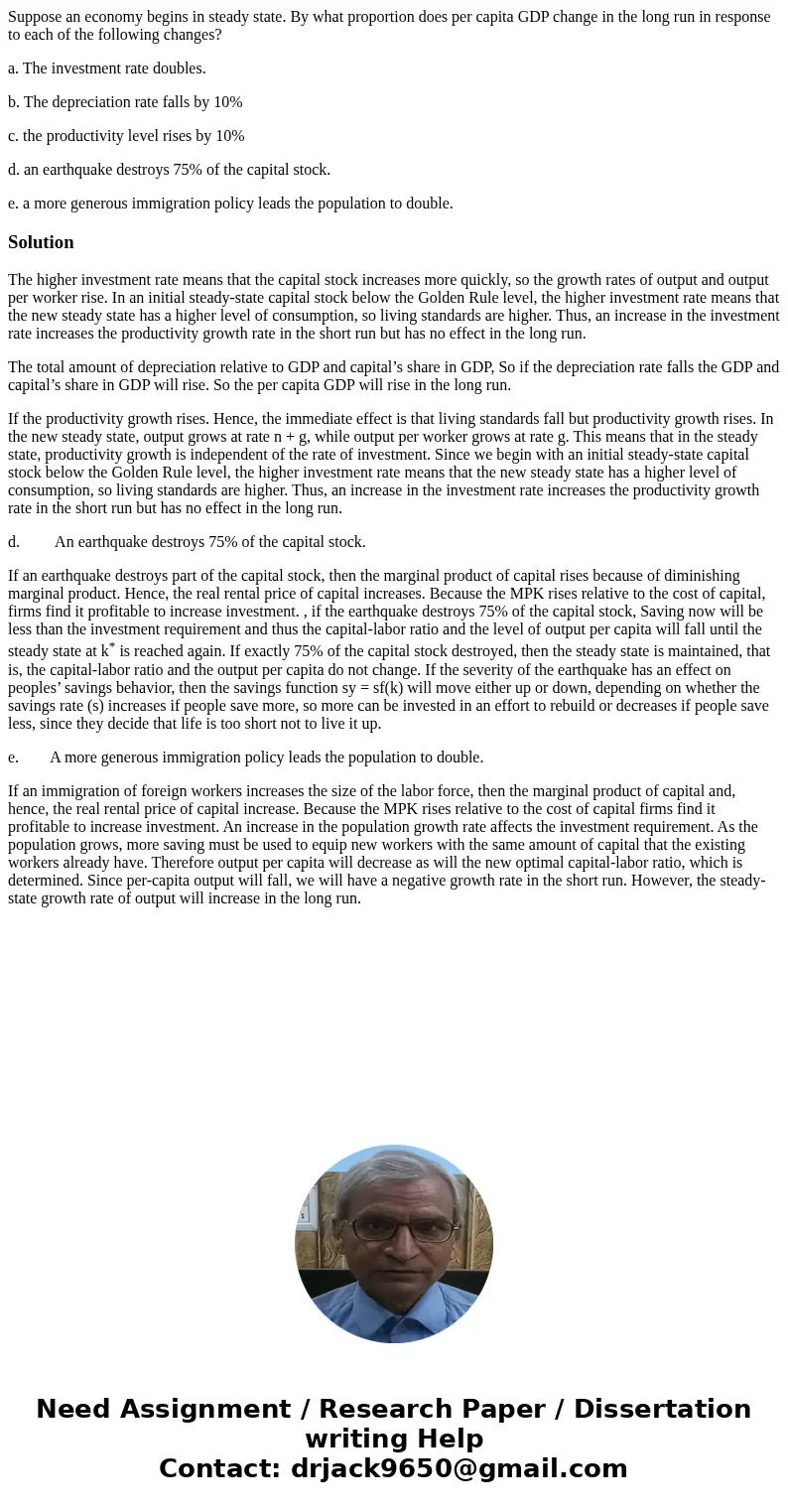Suppose an economy begins in steady state By what proportion
Suppose an economy begins in steady state. By what proportion does per capita GDP change in the long run in response to each of the following changes?
a. The investment rate doubles.
b. The depreciation rate falls by 10%
c. the productivity level rises by 10%
d. an earthquake destroys 75% of the capital stock.
e. a more generous immigration policy leads the population to double.
Solution
The higher investment rate means that the capital stock increases more quickly, so the growth rates of output and output per worker rise. In an initial steady-state capital stock below the Golden Rule level, the higher investment rate means that the new steady state has a higher level of consumption, so living standards are higher. Thus, an increase in the investment rate increases the productivity growth rate in the short run but has no effect in the long run.
The total amount of depreciation relative to GDP and capital’s share in GDP, So if the depreciation rate falls the GDP and capital’s share in GDP will rise. So the per capita GDP will rise in the long run.
If the productivity growth rises. Hence, the immediate effect is that living standards fall but productivity growth rises. In the new steady state, output grows at rate n + g, while output per worker grows at rate g. This means that in the steady state, productivity growth is independent of the rate of investment. Since we begin with an initial steady-state capital stock below the Golden Rule level, the higher investment rate means that the new steady state has a higher level of consumption, so living standards are higher. Thus, an increase in the investment rate increases the productivity growth rate in the short run but has no effect in the long run.
d. An earthquake destroys 75% of the capital stock.
If an earthquake destroys part of the capital stock, then the marginal product of capital rises because of diminishing marginal product. Hence, the real rental price of capital increases. Because the MPK rises relative to the cost of capital, firms find it profitable to increase investment. , if the earthquake destroys 75% of the capital stock, Saving now will be less than the investment requirement and thus the capital-labor ratio and the level of output per capita will fall until the steady state at k* is reached again. If exactly 75% of the capital stock destroyed, then the steady state is maintained, that is, the capital-labor ratio and the output per capita do not change. If the severity of the earthquake has an effect on peoples’ savings behavior, then the savings function sy = sf(k) will move either up or down, depending on whether the savings rate (s) increases if people save more, so more can be invested in an effort to rebuild or decreases if people save less, since they decide that life is too short not to live it up.
e. A more generous immigration policy leads the population to double.
If an immigration of foreign workers increases the size of the labor force, then the marginal product of capital and, hence, the real rental price of capital increase. Because the MPK rises relative to the cost of capital firms find it profitable to increase investment. An increase in the population growth rate affects the investment requirement. As the population grows, more saving must be used to equip new workers with the same amount of capital that the existing workers already have. Therefore output per capita will decrease as will the new optimal capital-labor ratio, which is determined. Since per-capita output will fall, we will have a negative growth rate in the short run. However, the steady-state growth rate of output will increase in the long run.

 Homework Sourse
Homework Sourse